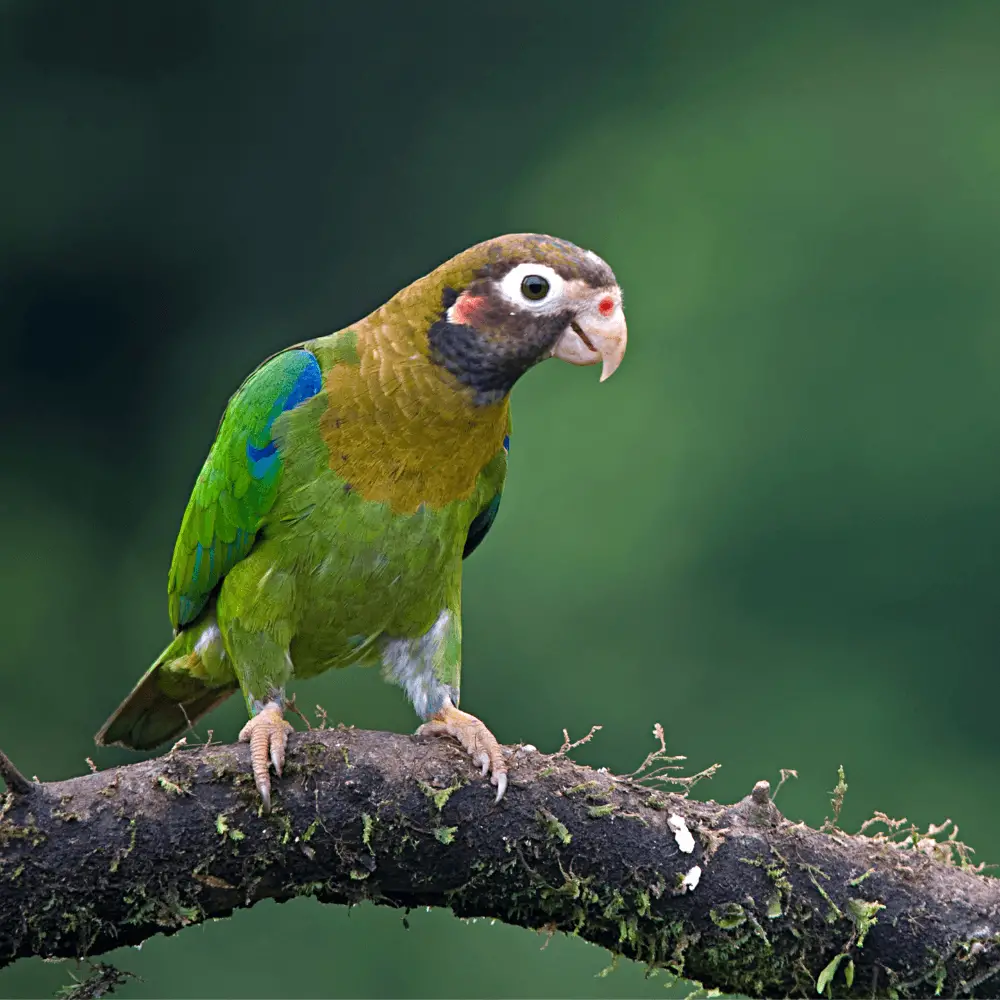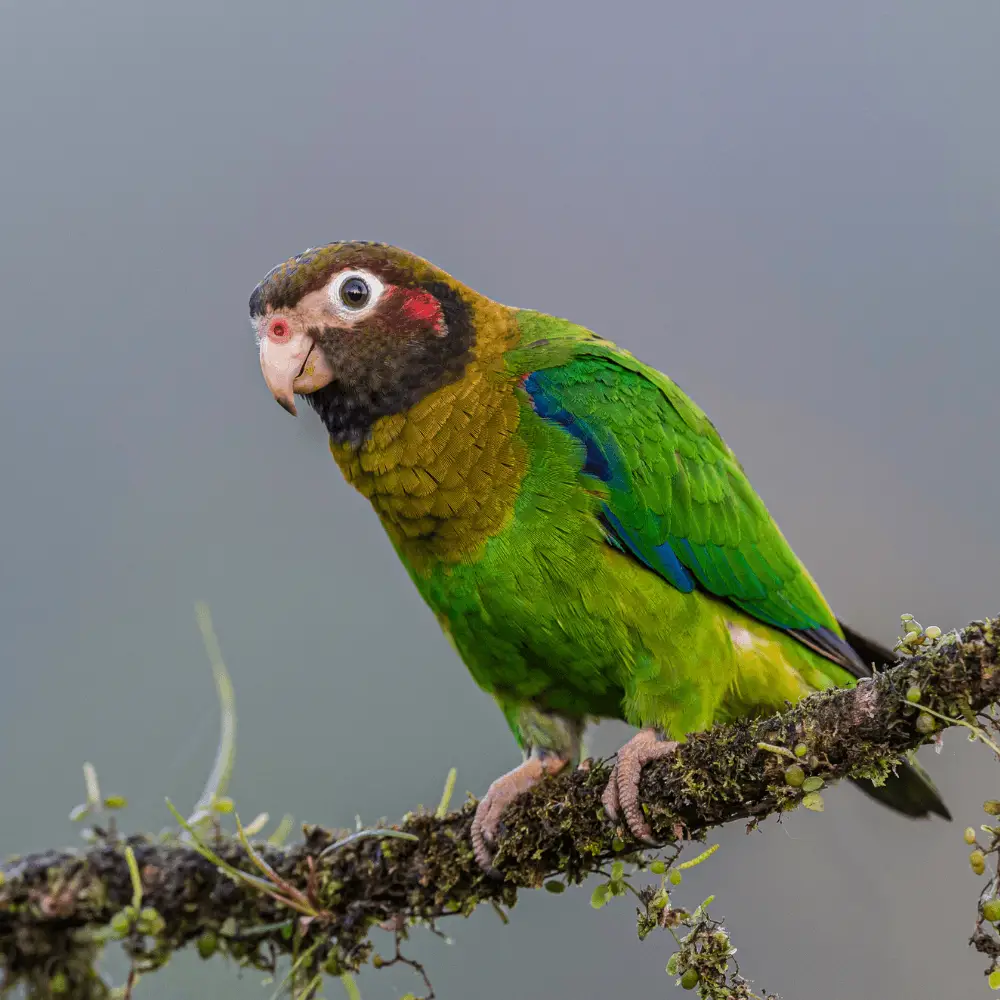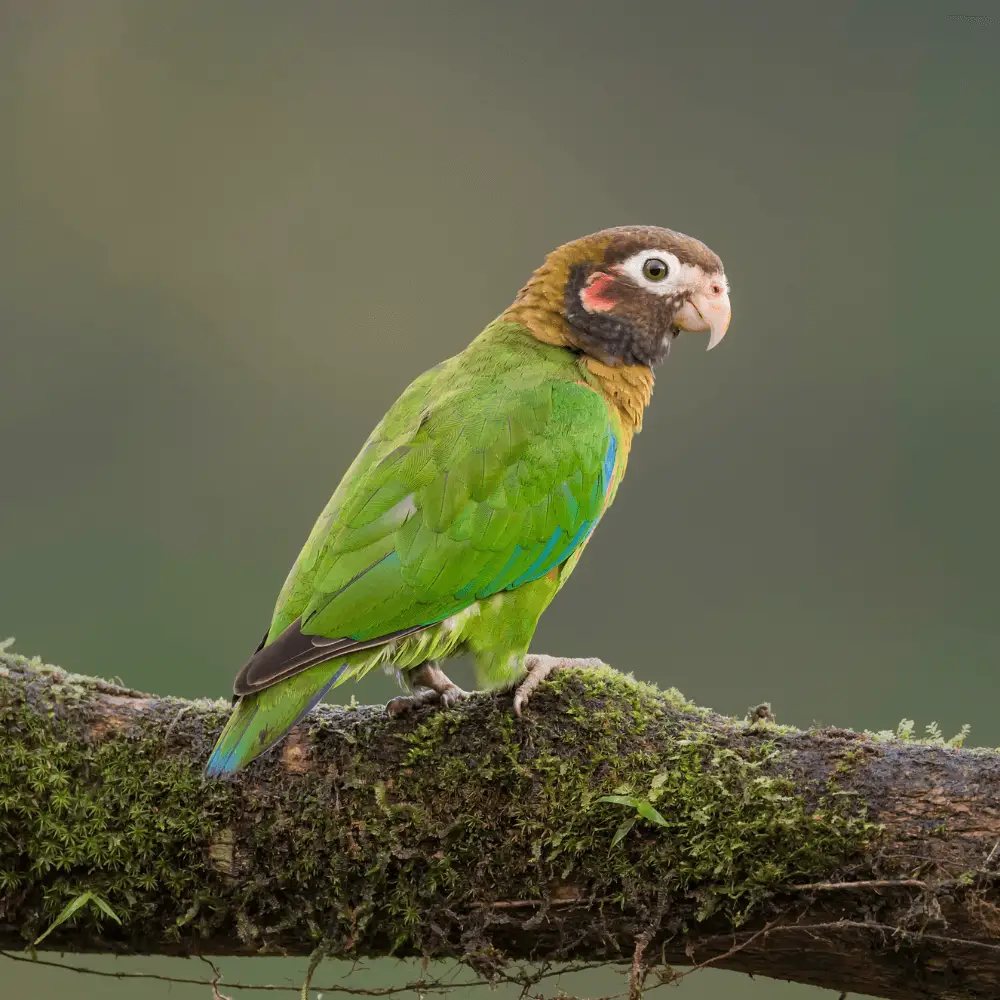Brown-hooded parrot: 21cm. height and weight of around 165 g. More distinguishable from the Brown-hooded parrot (Pyrilia haematotis) is your head, with a white front and white bare eye-ring as well; ear with red or orange feathers, coronilla Grizzli Cafe, chest Yes nape yellow-green.
The rest of the body is generally green with the armpit Red (easily visualized on the fly), contrasting with the blue-green of the wings and the green of the tail. The latter with light blue at the tip of the central tail feathers.
The bill is pale brown with a yellow tinge. The iris is red and the legs are grayish brown.
The immature are similar to the adults, but paler, energized, and without the red color in the head. Their irises are dark.
- Order : Psittaciformes
- Family : Psittacidae
- Genus : Pyrilia
- Scientific name : Pyrilia haematotis
- Quote : ( Sclater,PL & Arezki , 1860)
- Protonimo : pionus haematotis
- Height: 21cm.
-
50 year
-
38cm.
Subspecies

Pyrilia haematotis coccinicollaris
- ( Laurent , 1862) – With red markings on the lower part of the back of the neck and at the top of the chest , often forming a band in the male, weaker in the female.
- ( Laurent, 1862) – It is from Panama and northwest of Colombia.
Pyrilia haematotis haematotis
- ( Sclater,PL & Arezki , 1860) – The nominal .
Habitat
It lives mainly in the canopy of humid forests with a deciduous tendency, until the 1500 m. Their herds are small and quiet at feeding times.
In Colombia, It is considered a very rare species.
Distribution

you can observe in the freedom of the Center-South of Mexico in the North-West of Colombia.
You can socialize with other parrots.
Reproduction
It nests in tree hollows and seems to share with Blue-headed Parrot (Pionus menstruus).
Breeding season is in February in Yucatan; May-July in Guatemala; In August Panama.
Food
Feeds on fruits and seeds of trees in wooded areas, as well as epiphytic plants and the green leaves of some types of mistletoe .
Endangered

• Demographic trend: Stable
Population Rationale :
Partners in Flight estimates the population at less than 50,000 individuals ( A. Panjabi in litt., 2008 ), which is placed in the group 20,000-49,999 individuals here.
Rationale trend :
The population of the Encapuchad Parrot is believed to be stable in the absence of evidence of reduction or serious threats.
Brown-hooded parrot in captivity
Very susceptible to stress and disease during acclimatization, sudden deaths occur without warning.
These are the reasons why they are rarely seen in captivity.

